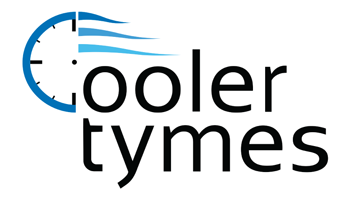
If you’re thinking about air conditioner installation in Litchfield Park, you should also be looking at your new air conditioner’s SEER rating.
SEER means Seasonal Energy Efficiency Rating. In short, it examines how productive your air conditioner is at changing electricity into cold air. A bigger number indicates your air conditioner is more efficient, which is great for your energy costs.
However, there are lots of differing models on the market for air conditioners. And a better SEER rating usually involves a bigger cost. So, how can you determine which one is best for your home?
At Cooler Tymes LLC, we give you a free, no-pressure home comfort analysis. You can schedule one by contacting us at 623-208-6444. Our skilled air conditioner installers will collaborate with you to help you pick the right air conditioner for your needs. Plus, they’ll also offer you a free, no-obligation estimate.
In the meantime, let’s go over SEER ratings and how they can influence your loved ones’ comfort. And your energy bills.
Does SEER Rating Even Matter?
In 2016, the federal government developed new SEER rules. New air conditioners are mandated at baseline 13 SEER in the northern United States and 14 SEER in the southeast and southwest. If you’re not sure when you had your air conditioner put in or what its SEER number is, you can find the sticker on the system outside your home. If you can’t see the sticker, you can reach us at 623-208-6444 for assistance.
If your air conditioner was replaced before that date, it’s likely much less efficient. Air conditioning technology has quickly evolved in the past couple of years, with major breakthroughs in energy efficiency and smart home compatibility. Using your new air conditioner with a smart thermostat could help you spend less on AC costs, since the thermostat can intuitively regulate your temperature settings when you’re away.
If your current air conditioner has a SEER rating between 8 and 10, getting a 14-SEER system could save you an estimated 30–50% on annual air conditioning expenses. Your savings are tied to your air conditioner size and your temperature settings.
Is the highest SEER Rating the Best?
An air conditioner with a higher SEER rating will be more efficient at converting electricity for cooling. The highest efficiency ones, which can go as great as 26 SEER, carry ENERGY STAR® certification. This certification shows the air conditioner has achieved EPA rules for energy savings and environmental conservation.
While ENERGY STAR air conditioners are often pricier, you’ll generally get the difference returned throughout the years through cheaper utility expenses. These air conditioners, which are generally rated 16 SEER and higher, use about 8% less power than other new units, according to ENERGY STAR.
One of the largest differences between a 14 SEER and 16 SEER is variable-speed capacity. A variable-speed air conditioner can cool at a number of speeds. This fine-tunes comfort for your house while keeping your electric costs down. It can also keep temperatures and humidity more consistent, since it can operate for longer without requiring a lot more power.
When adding a variable-speed air conditioner, you’ll need to make sure that your furnace or air handler is compatible. This is since your air conditioner depends on this equipment’s blower to send chilled air around your residence. Furnaces only work for about 20 years, so if yours is around that age, we suggest getting furnace installation at the same time so you can enjoy all the benefits of your variable-speed air conditioner.
When you’re set to replace your air conditioner, the cooling pros at Cooler Tymes LLC are here to assist you. Call us at 623-208-6444 to book your free home comfort analysis now.
